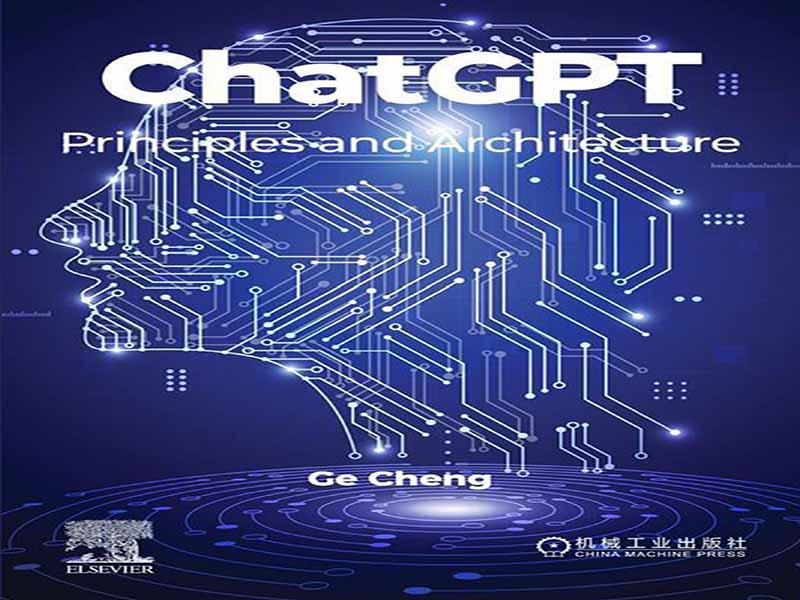- عنوان کتاب: ChatGPT Principles and Architecture
- نویسنده: Ge Cheng
- حوزه: مدل زبانی
- سال انتشار: 2025
- تعداد صفحه: 502
- زبان اصلی: انگلیسی
- نوع فایل: pdf
- حجم فایل: 13.3 مگابایت
به عنوان یک محقق علوم کامپیوتر دانشگاهی و یک کارآفرین باسابقه، عمیقاً تحت تأثیر تجربه مستقیم قابلیتهای استدلال منطقی ظهور یافته از ChatGPT قرار گرفتم. اگرچه بسیاری از افزایش بهرهوری در تولید محتوای چندوجهی که توسط هوش مصنوعی مولد (AI) به ارمغان آمده است، استقبال میکنند، اما تواناییهای استدلال نمایش داده شده توسط ChatGPT اغلب دست کم گرفته میشود. این قابلیت، ChatGPT را قادر میسازد تا نه تنها به عنوان هسته نسل جدیدی از تعامل انسان و کامپیوتر، بلکه به عنوان یک عامل هوشمند برای ساخت گردشهای کاری خودکار و نیمه خودکار نیز عمل کند. این فناوری حتی میتواند با حوزههای کنترل صنعتی یا رباتیک ادغام شود و در نتیجه تغییرات اجتماعی عمیقی را ایجاد کند. بسیاری تأثیر این تحول را دست کم میگیرند. با توجه به سرعت فعلی تحقیق و توسعه و تکرار برنامههای تجاری، انتظار دارم که این تحول به تدریج در طول ۳ تا ۵ سال آینده در تمام جنبههای زندگی و تولید انسان نفوذ کند و بهرهوری موجود را تا حد زیادی افزایش دهد و در نتیجه مجموعهای از تغییرات را آغاز کند. اگر از شما خواسته شود آخرین دورهای را که “تحول بزرگ فناوری” نامیده میشود، مشخص کنید، بسیاری بدون تردید به طلوع اینترنت اشاره میکنند. این تحول همچنین مدلهای کسبوکار مرتبط با تولید محتوا را تغییر شکل میدهد، روشهای کاری موجود را تغییر میدهد و حتی باعث ایجاد تغییراتی در روشهای تولید میشود. البته، این هنوز به این بستگی دارد که آیا نسل بعدی مدلهای زبان بزرگ میتوانند به پیشرفتهایی در کنترلپذیری خروجی محتوا دست یابند یا خیر. این کتاب برای کمک به خوانندگان در درک عمیق ChatGPT و فناوریهای مرتبط با آن طراحی شده است. این کتاب شامل 11 فصل است که به طور جامع جنبههای مختلف را بررسی میکند. فصل 1 تجزیه و تحلیل عمیقی از تکامل فناوری مدلهای زبان بزرگ، فناوریهای پشتیبان و پشتههای فناوری ارائه میدهد و تأثیر قابل توجه آنها بر جامعه را مورد بحث قرار میدهد. فصل 2 مبانی نظری و اجزای اصلی مدل Transformer را شرح میدهد و اصول و کاربردهای پشت این فناوریها را آشکار میکند. فصل 3 به فرآیند پیشآموزش مولد و اصول GPT میپردازد. فصل 4 در درجه اول به بررسی فناوریهایی مانند نرمالسازی لایه، مقداردهی اولیه متعامد و توکنسازی برگشتپذیر در GPT-2 میپردازد و تجزیه و تحلیل دقیقی از فرآیند تولید خودهمبسته GPT-2 ارائه میدهد. فصل ۵ به معرفی مکانیسمهای توجه پراکنده GPT-3، فرایادگیری و مفاهیم یادگیری مبتنی بر محتوا میپردازد و کاربرد استنتاج بیزی را در توزیعهای مفهومی مورد بحث قرار میدهد. فصل ۶ مجموعه دادههای پیشآموزش و روشهای پردازش دادهها برای مدلهای زبانی بزرگ و همچنین مدلها و معماریهای آموزشی توزیعشده را به تفصیل شرح میدهد. فصل ۷ اصول اساسی الگوریتم بهینهسازی سیاست پروگزیمال (PPO) را عمیقاً تجزیه و تحلیل میکند. فصل ۸ بر مجموعه دادههای تنظیم دقیق یادگیری تقویتی با بازخورد انسانی (RLHF) و کاربرد PPO در InstructGPT تمرکز دارد و قابلیتهای گفتگوی چند نوبتی و ضرورت یادگیری تقویتی بازخورد انسانی را مورد بحث قرار میدهد. فصل ۹ به بررسی نحوه انتقال مدلهای زبانی بزرگ به دامنههای خاص با هزینههای کم منابع میپردازد. فصل ۱۰ در درجه اول فناوریهای میانافزار دخیل در توسعه مدلهای زبانی بزرگ را معرفی میکند. فصل ۱۱ روندهای توسعه آینده مدلهای زبانی بزرگ را پیشبینی و چشمانداز میکند.
As a university computer science researcher and a veteran entrepreneur, I was profoundly impressed by experiencing firsthand the logical reasoning capabilities emerging from ChatGPT. Although many celebrate the efficiency enhancements in multimodal content creation brought by generative artificial intelligence (AI), the reasoning abilities displayed by ChatGPT are often underestimated. This capability enables ChatGPT to serve not only as the core of a new generation of human–computer interaction but also as an intelligent agent to build automated and semiautomated workflows. It can even merge with industrial control or robotics fields, thereby triggering profound social changes. Many underestimate the impact of this transformation. Given the current pace of R&D and commercial application iterations, I expect that this transformation will gradually permeate all aspects of human life and production over the next 3–5 years, greatly enhancing existing productivity and thereby initiating a series of changes. If asked to pinpoint the last era called a “major technological transformation,” many would unhesitatingly refer to the dawn of the internet. This transformation will also reshape business models related to content production, change existing work methods, and even drive changes in production methods. Of course, this still depends on whether the next generation of large language models can achieve breakthroughs in controllability of content output. This book is designed to help readers deeply understand ChatGPT and its related technologies. It consists of 11 chapters that comprehensively explore various aspects. Chapter 1 provides an in-depth analysis of the technological evolution of large language models, supporting technologies, and technology stacks, and discusses their significant impact on society. Chapter 2 elaborates on the theoretical foundations and main components of the Transformer model, revealing the principles and applications behind these technologies. Chapter 3 delves into the generative pretraining process and principles of GPT. Chapter 4 primarily explores technologies such as layer normalization, orthogonal initialization, and reversible tokenization in GPT-2, and provides a detailed analysis of GPT-2 autoregressive generation process. Chapter 5 introduces GPT-3 sparse attention mechanisms, metalearning, and content-based learning concepts, and discusses the application of Bayesian inference in conceptual distributions. Chapter 6 details the pretraining datasets and data processing methods for large language models, as well as distributed training models and architectures. Chapter 7 deeply analyzes the fundamental principles of the proximal policy optimization (PPO) algorithm. Chapter 8 focuses on the fine-tuning datasets of reinforcement learning with human feedback (RLHF) and the application of PPO in InstructGPT, discussing the capabilities of multiturn dialog and the necessity of human feedback reinforcement learning. Chapter 9 explores how to transfer large language models to specific domains at low resource costs. Chapter 10 primarily introduces the middleware technologies involved in the development of large language models. Chapter 11 predicts and prospects the future development trends of large language models.
این کتاب را میتوانید از لینک زیر بصورت رایگان دانلود کنید:
Download: ChatGPT Principles and Architecture




































نظرات کاربران